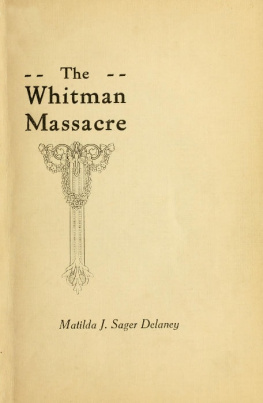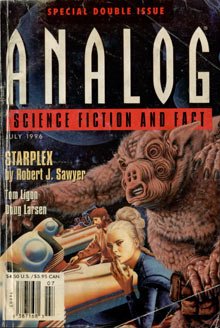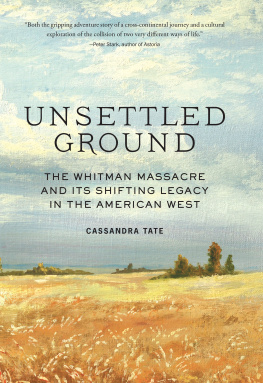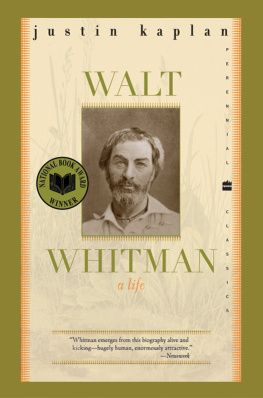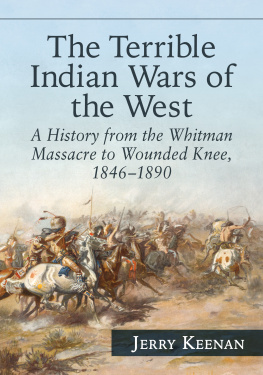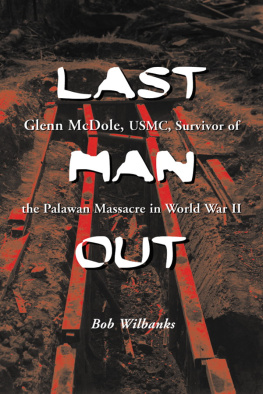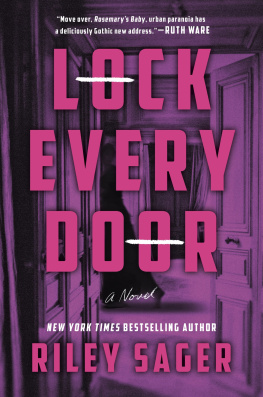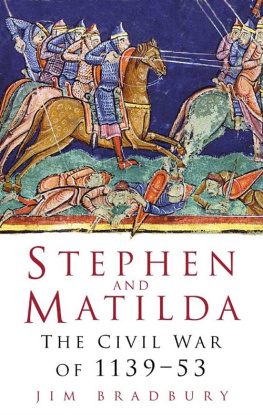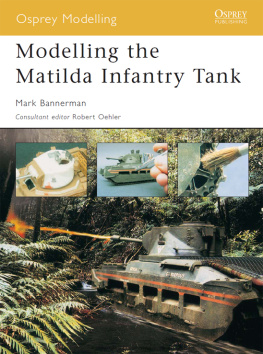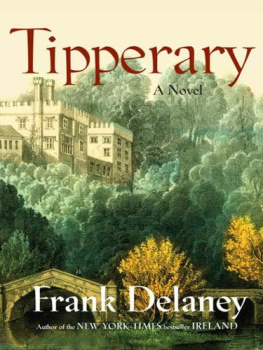Matilda J. Sager Delaney - A Survivor’s Recollections of the Whitman Massacre
Here you can read online Matilda J. Sager Delaney - A Survivor’s Recollections of the Whitman Massacre full text of the book (entire story) in english for free. Download pdf and epub, get meaning, cover and reviews about this ebook. year: 0, genre: Non-fiction. Description of the work, (preface) as well as reviews are available. Best literature library LitArk.com created for fans of good reading and offers a wide selection of genres:
Romance novel
Science fiction
Adventure
Detective
Science
History
Home and family
Prose
Art
Politics
Computer
Non-fiction
Religion
Business
Children
Humor
Choose a favorite category and find really read worthwhile books. Enjoy immersion in the world of imagination, feel the emotions of the characters or learn something new for yourself, make an fascinating discovery.
- Book:A Survivor’s Recollections of the Whitman Massacre
- Author:
- Genre:
- Year:0
- Rating:3 / 5
- Favourites:Add to favourites
- Your mark:
- 60
- 1
- 2
- 3
- 4
- 5
A Survivor’s Recollections of the Whitman Massacre: summary, description and annotation
We offer to read an annotation, description, summary or preface (depends on what the author of the book "A Survivor’s Recollections of the Whitman Massacre" wrote himself). If you haven't found the necessary information about the book — write in the comments, we will try to find it.
A Survivor’s Recollections of the Whitman Massacre — read online for free the complete book (whole text) full work
Below is the text of the book, divided by pages. System saving the place of the last page read, allows you to conveniently read the book "A Survivor’s Recollections of the Whitman Massacre" online for free, without having to search again every time where you left off. Put a bookmark, and you can go to the page where you finished reading at any time.
Font size:
Interval:
Bookmark:
and the Online Distributed Proofreading Team
(http://www.pgdp.net)
from page images generously made available by
Internet Archive
(http://archive.org)
| Note: | Images of the original pages are available through Internet Archive. See http://archive.org/details/survivorsrecolle00sage |
of the
WHITMAN MASSACRE
by
Matilda J. Sager Delaney
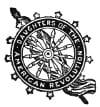
Sponsored by Esther Reed Chapter
Daughters of the American Revolution
Spokane, Washington
Copyright 1920

The following modest recital of a life which has covered much of the most interesting period of pioneering in this part of the country is of the greatest interest and value to all who know and love the Northwest. Few lives have been so full of such varied experiences and the clear and poignant recital of the massacre at Waillatpu is of the greatest historical importance. It is so vividly told that it should carry its own convincing truth down the years, as the basis of all writing in connection with the labors of that splendid type of missionaries, Dr. and Mrs. Whitman.
NETTA W. PHELPS,
(Mrs. M. A. Phelps)
Ex-State Regent, Daughters of the American Revolution.
FANNIE SMITH GOBLE,
(Mrs. Geo. H. Goble)
State Regent.
LURLINE WILLIAMS,
(Mrs. L. F. Williams)
Regent Esther Reed Chapter.
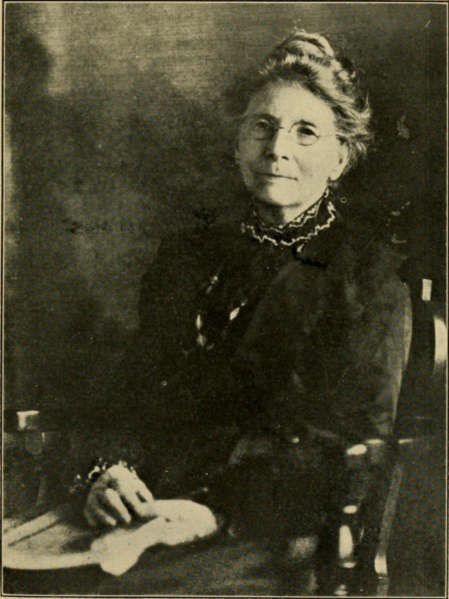
Matilda J. Sager Delaney
The thought of fostering care seems to have remained with this survivor since her days with the Whitmans.
Forgiving innocent ones for the atrocious acts of their kindred upon her own brothers, Mrs. Delaney became a benefactor of the Indians. Before the apportionment of their lands the Coeur dAlene squaws and children suffered great hardships. To them the Farmington hotel kitchen was a haven of warmth and plenty. They started home cheered and fed with bundles of food to tie on their ponies. The Delaney living room is the only place I have seen Indian women and girls light hearted and chatty. They loved to linger to sing for their hostess. Mrs. Delaneys hospitality extended to clergymen of all creeds. Hers has been a life of hard but generous service. Not to be ministered unto but to minister seems to have been the life motto of this woman reared in the wilds.
In 1881 General and Mrs. T. R. Tannatt came to the Northwest when the latter began a search for historical data; she sought pioneers and recorded their statements for comparison, in an effort to obtain truth. Opportunity gave her acquaintance with Mr. Gray, author of History of Oregon, Rev. Cushing Eels, the Spalding family, several survivors of the Whitman massacre, and pioneer army and railway officers from whom she gleaned information which later assisted her in writing the booklet, Indian Battles of the Inland Empire in 1858, published by the D. A. R.
In 1887 she stopped at the Farmington hotel owned by Mrs. Delaney, and continued an acquaintance with her until 1920. She said Mrs. Delaneys account of the massacre never varied, and in discussion of points of difference with other survivors Mrs. Delaneys clear description and logical reasoning invariably convinced the others that she must be correct, while her clear remembrance of subsequent events, known to them both for more than three decades, strengthened Mrs. Tannatts belief in the accuracy of her earlier impressions.
Mrs. Tannatt often urged this witness of the heartrending tragedy to publish her recollections, and had the pleasure of reading the manuscript for this narrative which she said contained the most comprehensive and truthful description of the Whitman massacre she had seen. She consented to write the Foreword, but before doing so was summoned by her Heavenly Father.
MIRIAM TANNATT MERRIAM.
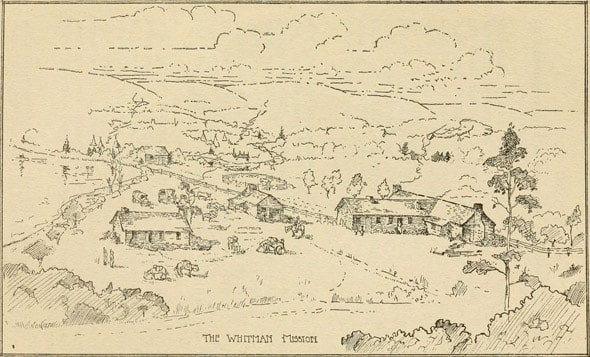
The house on the left was called the Mansion House, where emigrants wintered.
The house in the center, the Blacksmith Shop. The house in the distance was the mill. The house to the right was the Whitmans home.
Seven A SURVIVORS RECOLLECTIONS
of the
WHITMAN MASSACRE
by
MATILDA J. SAGER DELANEY

In the spring of 1844 we started to make the journey across the plains with ox teams. I was born in 1839, October 16th, near St. Joseph, Mo., which was a very small town on the extreme frontier, right on the Missouri River, with just a few houses. My fathers name was Henry Sager. He moved from Virginia to Ohio, then to Indiana and from there to Missouri. My mothers name was Naomi Carney-Sager. In the month of April, 1844, my father got the Oregon fever and we started West for the Oregon Territory. Our teams were oxen and for the start we went to Independence, the rendezvous where the companies were made up to come across the plains. There were six children thenone was born on the journey, making seven in all.
The men of the company organized in a military manner, having their captain and other officers, for they were going through the Indian country and guards had to be put out for the protection of the travellers and to herd the stock. The immigration of 43 was piloted through by Dr. Whitman and ours was the second immigration across the mountains. The road was only a trail and was all Indian territory at that time, from the Missouri River to the Rocky Mountains. We had to ferry streams, sometimes with canoes fastened together and the wagons put on them; and the Indians rowed us across the rivers in some places. The mountains were steep and sometimes we had to unyoke our cattle and drive them down, letting the wagons down by ropes. The Captain of our company was named William Shaw. There were vast herds of buffalo on the plains and wandering bands of Indians. We had to guard the cattle at night by taking turns. After we started across the plains we traveled slowly; and one day in getting out of the wagon my oldest sister caught her dress and her leg was broken by the wheel running over it. There was no doctor in our company, but there was a German doctor by the name of Dagan in the following company and he and my father fixed up the leg and from that time on the old doctor stayed with us and helped. My father was taken sick with the mountain fever and he finally died and was buried on the banks of the Green River in Wyoming. His last request was that Captain Shaw take charge of us and see us safe through to the Whitman station. He thought that was as far as we could go that winter. Twenty-six days later my mother died. She made the same request of Captain Shaw and called us around her and told my brothers to always stay with us and keep us togethermeaning the girls of the family. Dr. Dagan came on and helped to care for us with the boys help. When my mother died, my injured sister could walk only with the help of a crutch. Mother was wrapped in a blanket and buried by the side of the road. So the Captain and his wife looked after us and the other immigrants showed their concern for the orphans by taking an interest in us. A kind woman, Mrs. Eads, took the tiny baby and the big-hearted travelers shared their last piece of bread with us. We finally arrived at Dr. Whitmans station on the 17th day of October, 1844, seven months from the Missouri River to the Whitman station. It was a long time!
Font size:
Interval:
Bookmark:
Similar books «A Survivor’s Recollections of the Whitman Massacre»
Look at similar books to A Survivor’s Recollections of the Whitman Massacre. We have selected literature similar in name and meaning in the hope of providing readers with more options to find new, interesting, not yet read works.
Discussion, reviews of the book A Survivor’s Recollections of the Whitman Massacre and just readers' own opinions. Leave your comments, write what you think about the work, its meaning or the main characters. Specify what exactly you liked and what you didn't like, and why you think so.

